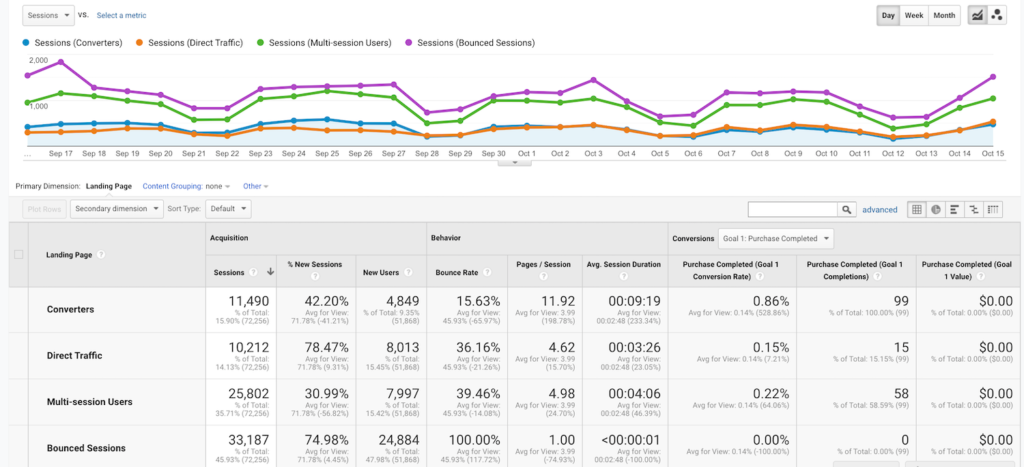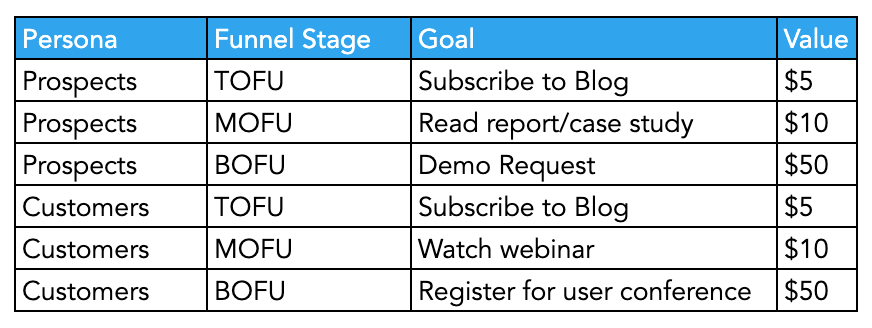What Data Is Google Analytics Goals Unable to Track: Find Out the Limitations
What Data Is Google Analytics Goals Unable to Track: Find Out the Limitations
Blog Article
Discover the Limitations of Google Analytics Goals: Revealing the Information Types That Remain Untrackable
As companies progressively depend on data-driven decision-making, recognizing the constraints of tools like Google Analytics ends up being paramount. While Google Analytics Goals offer valuable insights right into individual interactions, there exist data kinds that thwart tracking, presenting challenges to a detailed understanding of customer behavior. These untrackable data kinds question regarding the precision and completeness of the analytics data that companies heavily trust for their digital techniques. Interested to uncover the covert unseen areas in your data evaluation procedure?
Incomplete User Journey Tracking
Insufficient user trip tracking within Google Analytics can impede the capacity to precisely examine individual habits. When the individual journey is not completely tracked, there are spaces in the information that stop a detailed understanding of exactly how individuals engage with an internet site. This absence of understanding can result in missed out on opportunities for optimization and improvements to the customer experience.
One usual concern with insufficient individual journey monitoring is the lack of ability to see the complete course that individuals take in the past completing a goal or leaving the website. Without this information, it is testing to determine where individuals may be encountering barriers or friction factors that avoid them from converting. Additionally, incomplete tracking can obscure the impact of certain advertising and marketing initiatives or site modifications on individual habits.
To resolve this limitation, it is important to establish appropriate monitoring systems within Google Analytics to catch the entire individual journey. This may include establishing up event tracking, goal funnels, or making use of tools like Google Tag Supervisor to ensure that no essential communications go unrecorded. By acquiring a detailed view of the individual trip, web site proprietors can make more informed decisions to enhance user interaction and drive conversions.
Attribution Difficulties
Navigating with acknowledgment difficulties in Google Analytics requires a comprehensive understanding of how different touchpoints add to the general conversion procedure. Attribution obstacles emerge from the complexity of modern consumer trips, where users connect with numerous channels before converting. Google Analytics supplies various acknowledgment models like first touch, last touch, and straight, each using a various perspective on just how credit history is designated to touchpoints along the conversion course. These models may not always properly mirror the true impact of each touchpoint on the conversion.
One typical attribution obstacle is the difficulty in connecting conversions to the proper resource, especially in instances where customers connect with numerous channels before converting. Furthermore, cross-device monitoring poses another attribution challenge, as individuals typically switch between devices throughout their journey, making it testing to track their interactions effortlessly.
Offline Conversions
Provided the obstacles connected with associating conversions precisely in online channels, the measurement of offline conversions presents a significant opportunity for marketers seeking a more thorough understanding of their clients' trip. Offline conversions refer to activities that consumers absorb the real world, such as making purchases in brick-and-mortar shops or over visit site the phone, going to events, or involving with published products - what data is google analytics goals unable to track. These conversions are critical for businesses that run both online and offline, as they provide important insights right into the performance of advertising and marketing campaigns throughout various touchpoints
Tracking offline conversions generally presented a considerable difficulty for online marketers, as it was challenging to connect these activities back to specific on-line interactions accurately. However, with improvements in technology, such as the integration of CRM systems, unique identifiers, and voucher codes, organizations can currently connect the gap between online and offline data to gain a much more all natural sight of consumer actions. By properly determining offline conversions, marketing experts can maximize their techniques, designate sources much more efficiently, and inevitably enhance the total customer experience.
Cross-Device Tracking
Cross-device tracking plays a vital duty in recognizing the interconnected nature of consumers' electronic interactions across several tools. In today's omnichannel globe, where individuals perfectly switch over between tablets, desktop computers, and smart devices, tracking their actions throughout these devices is vital for marketing experts to obtain a detailed sight of their consumer trip.

In addition, privacy problems and guidelines such as GDPR and CCPA have further challenging cross-device tracking. With customers demanding more control over their data and increased limitations on tracking innovations, marketing experts need to find cutting-edge and privacy-compliant ways to attach individual interactions across tools.
Dynamic Web Content Interaction
Recognizing individual involvement with dynamic material is pivotal in maximizing digital advertising methods for enhanced target market communication. Dynamic web content refers to site elements that transform based upon user habits, choices, or various other aspects, supplying a personalized experience. Nevertheless, tracking user interactions with dynamic content postures challenges for traditional analytics tools like Google Analytics.
While Google Analytics can track basic communications like clicks and web page sights, it may struggle to capture more nuanced engagements within vibrant material. what data is google analytics goals unable to track. Metrics such as time invested on details vibrant elements, float activities, or communications within pop-ups are frequently not quickly quantifiable utilizing standard monitoring techniques. This restriction impedes marketers' ability to completely understand just how users are involving with vibrant web content and customize their approaches as necessary

Verdict
In final thought, Google Analytics objectives have limitations in tracking incomplete customer trips, connecting conversions properly, recording offline conversions, tracking cross-device communications, and gauging vibrant material engagement. These restraints highlight the significance look at this web-site of discovering added monitoring techniques and devices to obtain a much more comprehensive understanding of individual habits and conversions past what Google Analytics can supply.
While Google Analytics Goals offer valuable understandings into individual communications, there exist information kinds that avoid monitoring, presenting challenges to a comprehensive understanding of user actions.Incomplete user trip tracking within Google Analytics can hinder the capability to properly evaluate customer actions. When the customer trip is not fully tracked, there are voids in the data that prevent an extensive understanding of exactly how users communicate with a website.One common problem with incomplete individual trip tracking is the lack of ability to see the full course that customers take in the past completing an objective or leaving the site. By official source acquiring a thorough view of the customer trip, internet site owners can make more enlightened choices to improve user engagement and drive conversions.
Report this page